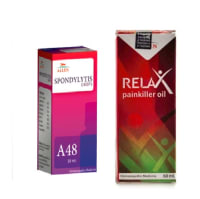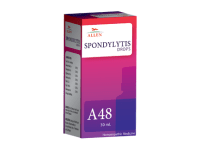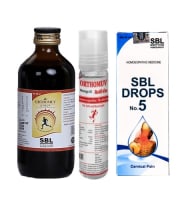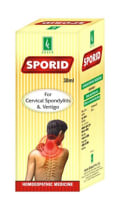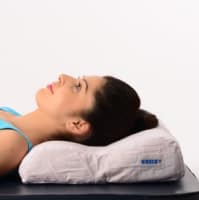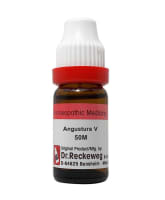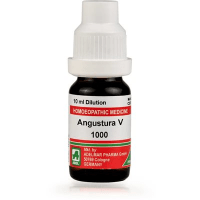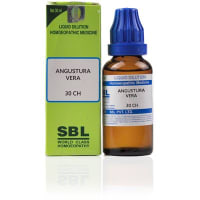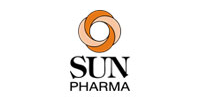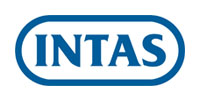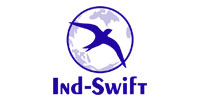Bhargava Spondin Drop
Bhargava Phytolab
Bhargava Phytolab
DESCRIPTION
SPONDIN Drops
Assured Relief from the Spondylitis
INDICATIONS:
Spondylitis - particularly Cervical Spondylitis
Pain, numbness, stiffness and stretching sensation in the nape of the neck back, radiating to arms, fingers loins
Neuralgia (pain along the nerves)
Cramps, jerking, twitching and shortening of muscles
Pain between shoulders
Vertigo and headache
Pressure over sacrum, spinal concussion and pain in coccyx radiating up the spine
DOSAGE:
Adults: 10-15 Drops in half cup of luke-warm water thrice a day
Children: Half the Adult dose, Or as directed by the physician.
Original Packing: 30 ml glass bottle.
Composition: Hypericum perforatum 5X, Cuprum metalicum 6X, Conium maculatum 3X, Colocynthis vulgaris 3X, Ruta graveolens 3X, Dulcamera 3X, Ledum palustre 2X.
Pharmacological and Clinical Notes:
Hypericum perforatum: Acts on nerve endings releasing their compression inflammation indicated in pain in nape of neck radiating to arms to fingers, pressure over sacrum, spinal concussion, coccyx injury from RIS with pain radiating up spine.
Cuprum metallicum: Indicated in hyperaesthsia of spinal column, twitching of muscles of back up to the neck.
Conium maculatum: Indicated in tension, stiffness pain in the nape of the neck as from excoriation in the cervical vertebrae or sprains, dorsal pain between shoulders may or may not be associated with vertigo and headache.
Colocynthis vulgaris: Acts well on shooting, cutting, intermittent pain in the neck on bending over or lying on the back. Also relieves the symptoms of vertigo and headache associated with cervical spondylitis.
Ruta graveolens: Relieves bone and joint pain, strained muscles and tendons, stinging pains, sharp back spasm associated with degenerative changes as well accidental injuries acts well in deep pains and broused feeling in neck and back.
Dulcamera: Indicated in stiff neck especially in damp weather, pain in small joints of the neck, shooting contractions in the shoulders and arms.
Ledum palustre: Indicated in painful stiffness in back after sitting for long hours, aggravated by cold weather or cold water.
Frequently asked Questions:
What is spondylitis ?
Spondylosis is a disorder in which there is abnormal wear on the cartilage and bones of the cervical spine. The main contributor to the development of spondylosis is aging. Erosion and degeneration of the soft tissues of the spine are a natural part of the aging process.
Cervical spondylitis (CS) is a common degenerative condition of the cervical (neck) spine that most likely is caused by age-related changes (wear and tear) in the intervertebral disks and vertebrae of the neck, presenting with severe neck pain and mostly radiation of pain to the arms.
Cervical (neck) pain is one of the most common problems that one encounters in day to day life. Perhaps it can be as general as common cold but it surely needs attention!
What are symptoms of cervical spondylitis ?
Symptoms of cervical spondylitis may manifest differently in different individuals, varying from mild to severe. The most common of them being
1. Neck pain along with headaches, which may also radiate to the upper arm, forearm or hand.
2. Occasional pain in the neck and shoulder, often accompanied by neck muscle stiffness.
3. Pressure and weakness in the hands and inability to perform simple actions such as writing.
4. Giddiness vertigo associated with pain and stiffness.
5. Fatigue, disturbed sleep and impaired ability to work.
6. Movement of the neck makes the pain worse.
7. Pain in the upper arm.
8. Numbness in the tips of the fingers.
9. Loss of balance
10. Loss of control over the bladder and bowels (if cervical cord is compressed)
What are causes of cervical spondylitis ?
Cervical spondylitis results due to abnormal wear of the cartilage and bones of the neck (cervical vertebrae) with degeneration and mineral deposits in the cushions between the vertebrae (cervical disks). This is more common after the age of 40 years and is triggered by certain risk factors.
1. Working on computer for long time.
2. Writing with head bent for long time.
3. Excess use of smart phone devices
4. Driving for long hours
5. House hold activities
6. Over exercise
7. Sleeping in wrong posture
8. Heavy bag load
Use under medical supervision.
SPONDIN Drops
Assured Relief from the Spondylitis
INDICATIONS:
Spondylitis - particularly Cervical Spondylitis
Pain, numbness, stiffness and stretching sensation in the nape of the neck back, radiating to arms, fingers loins
Neuralgia (pain along the nerves)
Cramps, jerking, twitching and shortening of muscles
Pain between shoulders
Vertigo and headache
Pressure over sacrum, spinal concussion and pain in coccyx radiating up the spine
DOSAGE:
Adults: 10-15 Drops in half cup of luke-warm water thrice a day
Children: Half the Adult dose, Or as directed by the physician.
Original Packing: 30 ml glass bottle.
Composition: Hypericum perforatum 5X, Cuprum metalicum 6X, Conium maculatum 3X, Colocynthis vulgaris 3X, Ruta graveolens 3X, Dulcamera 3X, Ledum palustre 2X.
Pharmacological and Clinical Notes:
Hypericum perforatum: Acts on nerve endings releasing their compression inflammation indicated in pain in nape of neck radiating to arms to fingers, pressure over sacrum, spinal concussion, coccyx injury from RIS with pain radiating up spine.
Cuprum metallicum: Indicated in hyperaesthsia of spinal column, twitching of muscles of back up to the neck.
Conium maculatum: Indicated in tension, stiffness pain in the nape of the neck as from excoriation in the cervical vertebrae or sprains, dorsal pain between shoulders may or may not be associated with vertigo and headache.
Colocynthis vulgaris: Acts well on shooting, cutting, intermittent pain in the neck on bending over or lying on the back. Also relieves the symptoms of vertigo and headache associated with cervical spondylitis.
Ruta graveolens: Relieves bone and joint pain, strained muscles and tendons, stinging pains, sharp back spasm associated with degenerative changes as well accidental injuries acts well in deep pains and broused feeling in neck and back.
Dulcamera: Indicated in stiff neck especially in damp weather, pain in small joints of the neck, shooting contractions in the shoulders and arms.
Ledum palustre: Indicated in painful stiffness in back after sitting for long hours, aggravated by cold weather or cold water.
Frequently asked Questions:
What is spondylitis ?
Spondylosis is a disorder in which there is abnormal wear on the cartilage and bones of the cervical spine. The main contributor to the development of spondylosis is aging. Erosion and degeneration of the soft tissues of the spine are a natural part of the aging process.
Cervical spondylitis (CS) is a common degenerative condition of the cervical (neck) spine that most likely is caused by age-related changes (wear and tear) in the intervertebral disks and vertebrae of the neck, presenting with severe neck pain and mostly radiation of pain to the arms.
Cervical (neck) pain is one of the most common problems that one encounters in day to day life. Perhaps it can be as general as common cold but it surely needs attention!
What are symptoms of cervical spondylitis ?
Symptoms of cervical spondylitis may manifest differently in different individuals, varying from mild to severe. The most common of them being
1. Neck pain along with headaches, which may also radiate to the upper arm, forearm or hand.
2. Occasional pain in the neck and shoulder, often accompanied by neck muscle stiffness.
3. Pressure and weakness in the hands and inability to perform simple actions such as writing.
4. Giddiness vertigo associated with pain and stiffness.
5. Fatigue, disturbed sleep and impaired ability to work.
6. Movement of the neck makes the pain worse.
7. Pain in the upper arm.
8. Numbness in the tips of the fingers.
9. Loss of balance
10. Loss of control over the bladder and bowels (if cervical cord is compressed)
What are causes of cervical spondylitis ?
Cervical spondylitis results due to abnormal wear of the cartilage and bones of the neck (cervical vertebrae) with degeneration and mineral deposits in the cushions between the vertebrae (cervical disks). This is more common after the age of 40 years and is triggered by certain risk factors.
1. Working on computer for long time.
2. Writing with head bent for long time.
3. Excess use of smart phone devices
4. Driving for long hours
5. House hold activities
6. Over exercise
7. Sleeping in wrong posture
8. Heavy bag load
Use under medical supervision.
Related products
Related products


 Bookmark
Bookmark

